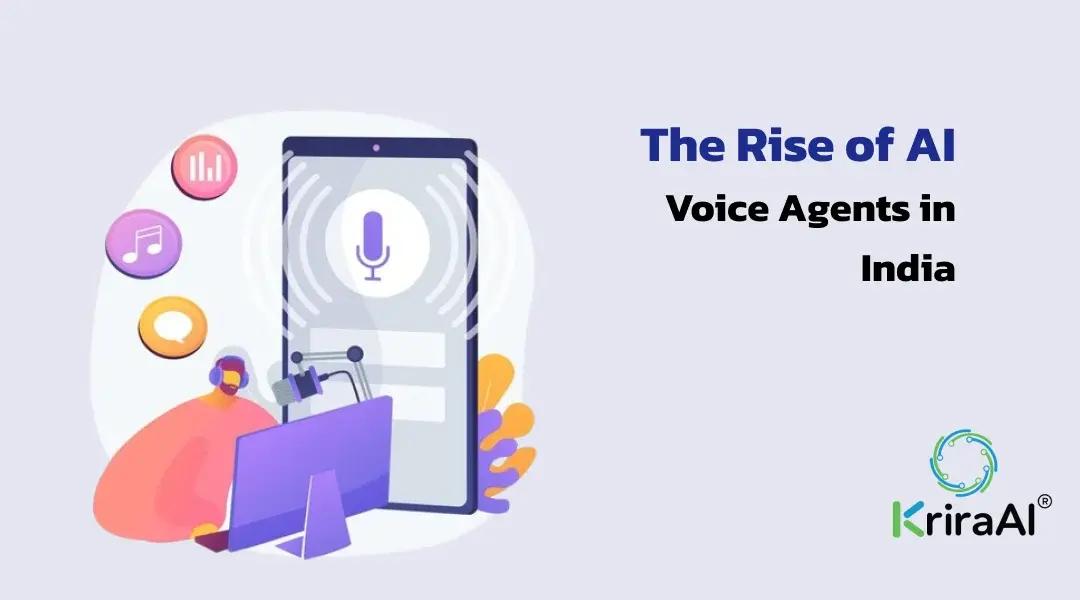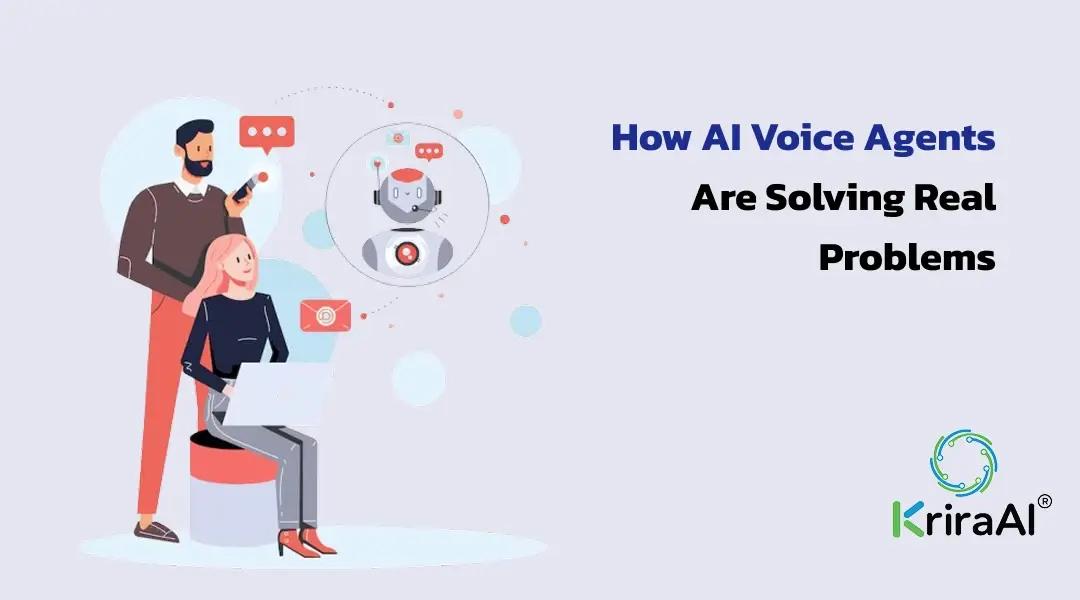How AI Voice Agents Are Replacing Traditional Call Centers in India
When I first proposed replacing human agents with AI voice assistants to a legacy BFSI client, the room went quiet. Not with excitement. With disbelief.
“How can a robot speak Gujarati fluently enough to convince my 58-year-old rural customer to verify their KYC?”
Fair question.
Fast-forward nine months, and that same AI voice agent now handles over 15,000 calls per day—in three Indian languages—with 97% accuracy and zero burnout.
This isn’t sci-fi. This is India, 2025.
Why Traditional Call Centers Are Under Pressure
Let’s not sugarcoat it. Call centers in India are cracking.
High attrition. Endless training cycles. Escalating salaries. Inconsistent service. And let’s not even talk about peak season overload.
Worse, customers hate the wait times. Companies hate the bills.
The economics are brutal. And unsustainable.
So what's the alternative?

AI voice agents aren’t a Silicon Valley toy. They’re working—right here, right now—in Indian banks, hospitals, eCommerce firms, and telcos.
Voice AI for banks is no longer experimental. It's operational.
And it's not just English. It’s Marathi. Hindi. Tamil. Bengali. And yes, even Hinglish.
What Are AI Voice Agents?
Think of them as the next evolution of the call center agent—without the coffee breaks or sick days.
They’re powered by conversational AI in banking, NLP, and speech synthesis models trained on regional accents and domain-specific scripts.
They don’t sound robotic anymore. That’s old tech.
Modern AI voice agents understand intent, remember context, and can handle thousands of calls simultaneously without dropping tone or accuracy.
Difference Between Voice Bots and Chatbots
Quick clarification. Because they’re not the same.
Chatbots live on websites and text platforms.
Voicebots pick up the phone. Or answer inbound calls.
A voicebot for inbound calls can greet a customer, verify their details, provide personalized responses, and even escalate to a human if needed.
In short: chatbots chat. Voice agents talk.
How Voice Agents Work in Real-Time
Here’s the tech stack I’ve personally deployed:
ASR (Automatic Speech Recognition): Converts speech to text.
NLU (Natural Language Understanding): Interprets what the customer means.
TTS (Text to Speech): Responds in a natural, human voice.
CRM/API Integration: Pulls or pushes customer data in real-time.
The result? Conversations that feel human—but scale like software.
India’s Call Center Industry: The Need for Disruption
Here’s the ugly truth.
Attrition in Indian call centers is 35–45% annually.
Training a new agent costs ₹30,000–₹50,000.
Only 1 in 3 agents survives 6 months.
Now add to that language mismatches, varying accents, and repetitive queries. It’s a nightmare.
AI voice agents don’t complain. They just work.
How AI Voice Agents Are Solving Real Problems

Let’s get concrete.
24/7 availability in multiple Indian languages
No holidays. No shifts. Fluent in Hindi, Tamil, Marathi, Kannada.
Instant scalability
Got a product launch? Expecting 50,000 calls? No problem. Scale in minutes.
Handle peak loads without extra hiring
Festive sale chaos? AI doesn’t panic. It just answers. Every. Single. Call.
Industry-Wise Applications in India
eCommerce
Order tracking
Return status
Delivery ETA queries
BFSI
KYC verification
OTP authentication
Fraud alerts
Healthcare
Appointment scheduling
Report reminders
Post-discharge follow-ups
Telecom
Plan upgrades
Balance checks
Recharge alerts
Each of these domains benefits from consistency, speed, and 100% data accuracy.
Benefits Over Traditional Call Centers
This isn’t theoretical. These are numbers I’ve seen in the wild:
60–70% cost reduction in operational expenses
100% consistency in tone, language, and messaging
Zero human error in data capture, CRM updates, or compliance scripts
Faster resolution—average call duration drops by 40%
That’s not an improvement. That’s a revolution.
Real Examples from Indian Businesses
Let me get specific.
Case Study 1: eCommerce Giant in Delhi NCR
Implemented a Hindi-English voicebot to handle “where is my order” queries.
Result:
87% call containment
₹1.2 crore saved in seasonal hiring
Case Study 2: Mid-Sized Private Bank in Mumbai
Replaced 60% of Tier-1 agents with a voice AI assistant for banking.
Result:
30% shorter call durations
95% accuracy in KYC verification
Zero fines in recent compliance audits
Challenges in Adoption
I won’t lie to you. This isn’t plug-and-play magic.
Accent & Dialect Training
India is linguistically chaotic. Training voice models in Bhojpuri and Tamil? Takes time. And real AI chops.
Human Handover
Voice agents need a smart fallback system for complex queries. You don’t want your AI stuck on a medical emergency or a fraud complaint.
Data Privacy
You’re recording calls, storing voiceprints, accessing CRMs. Make sure your vendor is GDPR-compliant and SOC2-ready.
Future of Call Centers with AI in India
The future isn’t human vs machine. It’s human + machine.
Hybrid Models
Tier-1 handled by AI. Complex or emotional cases escalated to human agents. Efficient. Empathetic.
Multilingual Expansion
Expect voice AI for Indian languages to evolve rapidly—into dialect-level understanding.
Contextual Intelligence
AI agents that remember a customer’s last call, preferences, and sentiment. That’s coming. Fast.
Conclusion
AI voice agents aren’t “coming soon.” They’re already answering calls across India—in your bank, your telecom provider, your favorite eCommerce brand.
And they’re getting smarter by the hour.
If you're still relying solely on traditional agents, you’re not just behind the curve. You're bleeding cash, time, and customer goodwill.
I’ve seen this shift from both sides of the line. And I’ll say this without hesitation: AI voice agents are not a threat. They’re your best hire this year.
FAQs
Yes. Modern models are trained in Hindi, Tamil, Marathi, Bengali, and even regional dialects.
Absolutely—when implemented right. Ensure GDPR, SOC2, and Indian data residency compliance.
No. Start with Tier-1 queries. Use a hybrid model for escalation.
Typically 4–8 weeks, depending on languages and CRM integration.
Most Indian firms see a 40–70% reduction in costs within the first 6 months.

CEO
